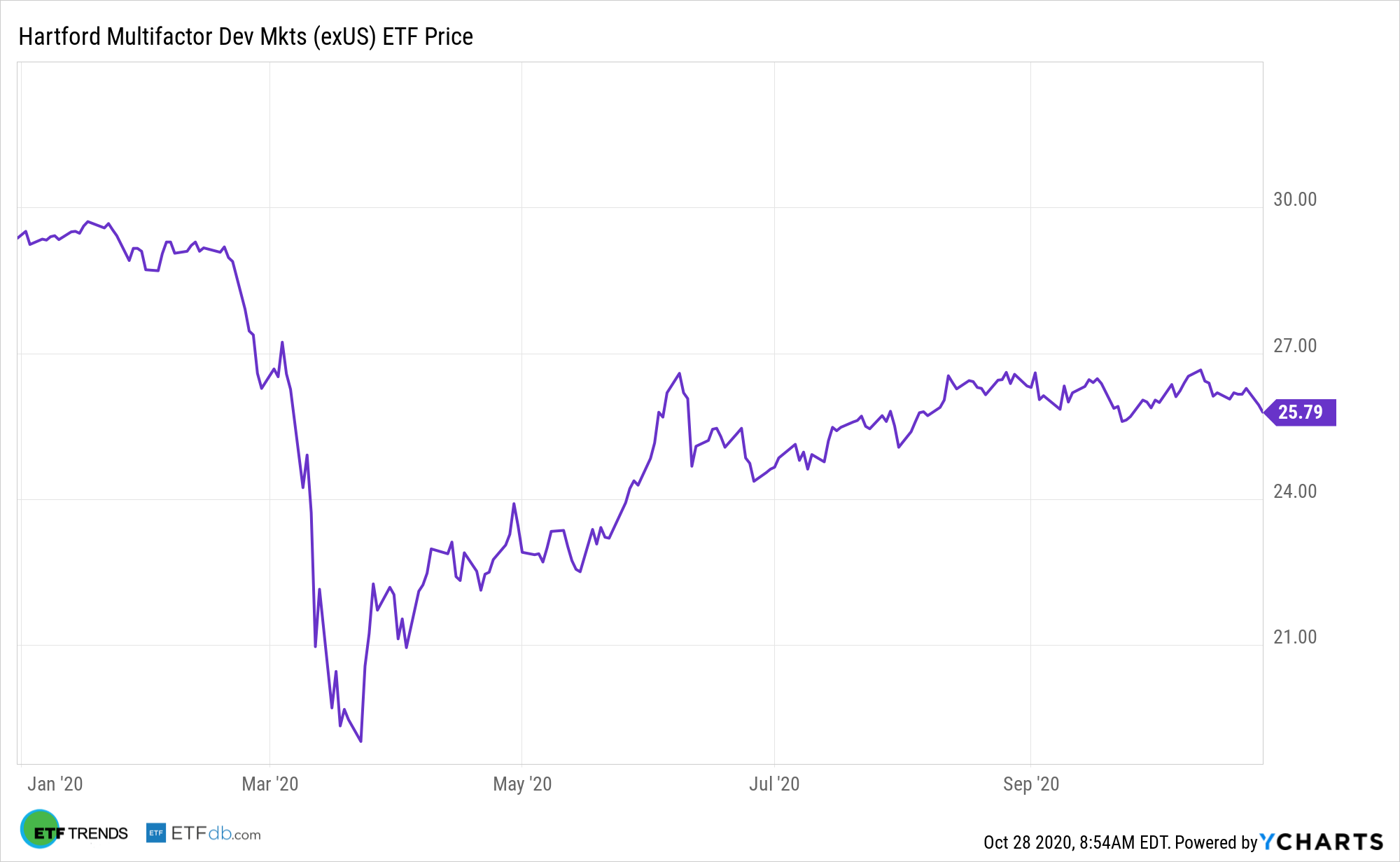Investors looking for exposure to ex-US developed markets stocks may want to consider putting the benefits of factors on their side, a task made easier by the Hartford Multifactor Developed Markets (ex-US) ETF (NYSEArca: RODM).
RODM seeks to provide investment results that correspond to the total return performance of the Hartford Risk-Optimized Multifactor Developed Markets (ex-US) Index. The fund generally invests at least 80% of its assets in securities included in the index and in depositary receipts representing securities included in the index. The index is designed to address risks and opportunities within developed international economies outside the U.S. by selecting equity securities of companies domiciled within developed international equity markets exhibiting a favorable combination of factor characteristics.
“The strategy starts with all large- and mid-cap stocks listed in 22 developed markets outside the United States,” according to Morningstar. “It scores each on the strength of its value, momentum, and quality characteristics and combines them into an overall score for each stock. Half of each stock’s composite score is based on its valuation. Another 30% is tied to its momentum, with the final 20% determined by its profitability.”
RODM Reduces International Equity Risk
With more looking to foreign markets as a way to diversify away from U.S. equities, investors will face certain risks associated with international exposure. Nevertheless, there are a number of smart beta global exchange traded fund strategies that can help investors better manage risks.
Most investors would typically turn to a traditional, beta index fund strategy to garner global market exposure. However, these market cap-weighted indexing methodologies may cause investors to become exposed to some of the largest companies that have grown the most or become too focused on only a handful of countries. For its part, RODM offers a more bespoke approach to trimming international equity risk than rival cap-weighted beta funds. RODM also features a value tilt.

RODM “holds stocks with an attractive combination of value, momentum, and quality traits, but its emphasis on the value factor eats into its factor diversification. It should tilt toward stocks trading at lower valuations, which can cause it to underperform the index when value is out of favor,” notes Morningstar.
Risk has kept many an investor up at night, but through smart beta exchange traded fund strategies, such as RODM, more can rest easier knowing that a rules-based index strategy has put into place safe guards to help diversify risk.
RODM “should behave like a low-volatility strategy most of the time, outperforming the MSCI ACWI Ex USA Index when the market declines and underperforming during market rallies. It should also push the portfolio away from riskier stocks and toward those that are more stable,” notes Morningstar.
For more on multi-factor strategies, visit our Multi-Factor Channel.
The opinions and forecasts expressed herein are solely those of Tom Lydon, and may not actually come to pass. Information on this site should not be used or construed as an offer to sell, a solicitation of an offer to buy, or a recommendation for any product.

